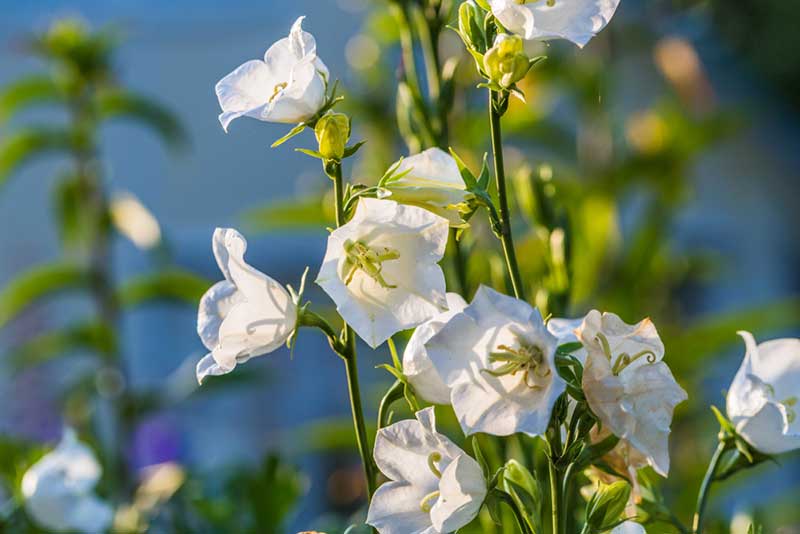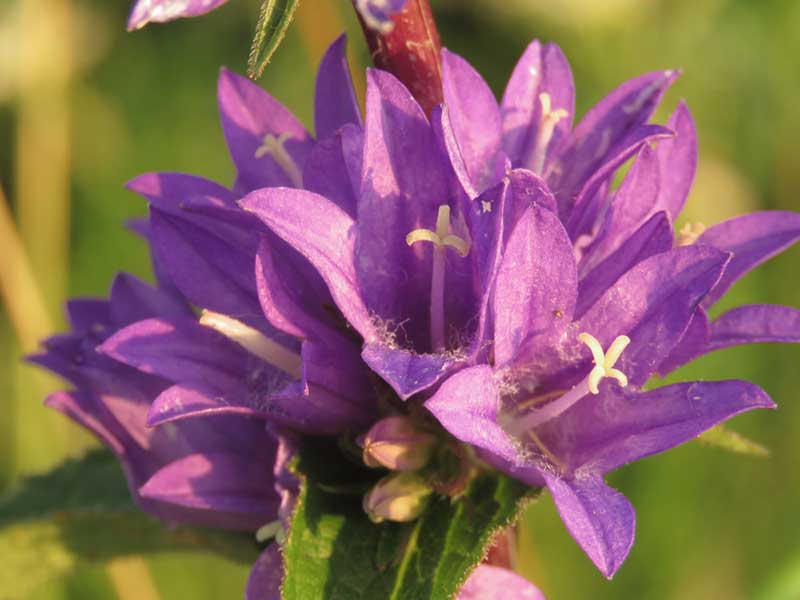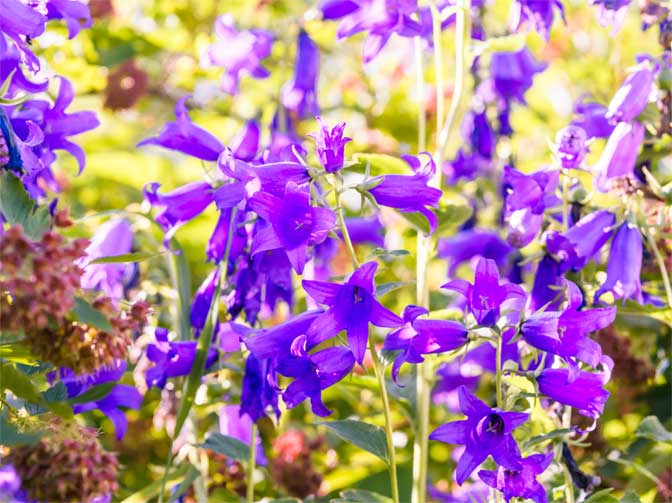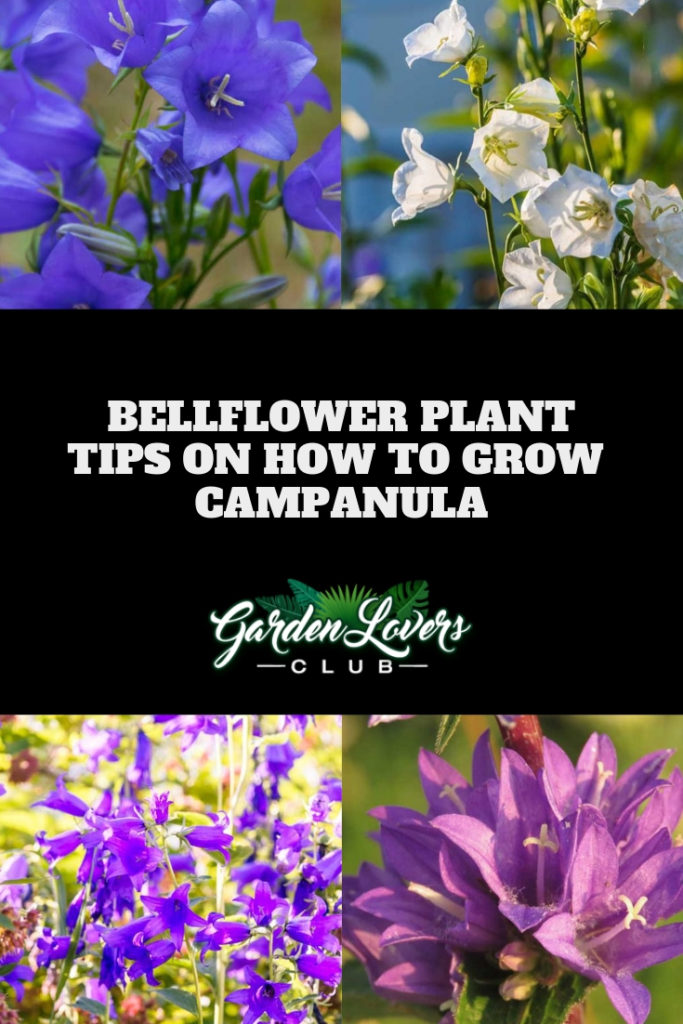The perennial Bellflower gets its name from the flared bottoms of the flower blooms that give them the appearance of colorful bells. With varying plant heights that reach anywhere from 1- 6 feet (depending on the variety planted), these hardy plants make great additions to rock gardens and cottage gardens.
Soil Requirements
Soil Requirements
Bellflowers grow best is loose, well-draining soil with a pH range between 6-8. By creating a planting mixture that is 50% soil and 50% compost you will ensure healthy, long-living plants that will produce an abundance of beautiful flowers for years.
Light Requirements
Bellflowers will tolerate a little shade in the afternoon, but prefer to grow in a location that is in full sun. The more direct sunlight the plant receives, the more blooms it will produce.
Temperature and Humidity Requirements
Warm days and cool nights are ideal for Bellflowers. These plants won’t grow well in regions with hot, tropical climates nor in regions that dip below 50 degrees at night. Bellflowers will develop powdery mildew in humid climates and soils that are kept overly moist.
Watering
Allow soil to feel dry to the touch between waterings. Soil should not be allowed to dry out completely and should never be soggy. Always apply water at soil level to prevent plant foliage from getting wet. Water early in the morning so the rising sun can quickly dry off any moisture that may have gotten on plant stems or foliage.
Fertilizer
Apply a balanced fertilizer, like a 10-10-10, once in the spring and again in mid-summer. Water plants thoroughly after fertilizing. A side dressing of organic compost can be applied to plants twice a year instead of non-organic fertilizer to keep the plants well fed and growing strong.
Mulch
Place a 3-inch layer of organic mulch, like straw or compost, on the soil surrounding the Bellflowers; keep mulch away from plant stems. Mulch will keep soil cool, help soil retain moisture and prevent weed growth. As the organic mulch decomposes it will also provide nutrients to the plants.
Pruning
Prune (also called deadheading) as soon as blooms begin to fade. Snip off spent blooms with sharp pruning shears to encourage the plant to re-bloom.
Powdery Mildew
Symptoms of powdery mildew (which is a common disease for Bellflowers) include a fuzzy white substance on leaves, wilted and/or discolored leaves that drop from the plant. Get rid of powdery mildew by pruning off all parts of affected plants and discarding them, along with any fallen debris. Dip pruning shear blades in a mild bleach water solution, then prune remaining plants to increase air circulation and prevent powdery mildew from returning.
Pest Control
Aphids, snails and slugs are attracted to Bellflowers. Inspect plants for distorted growth or yellowing leaves that are initial signs of an aphid infestation. Spray plants (focus on the underside of leaves) with insecticidal soap to kill aphids. Slime trails and ragged holes in the foliage indicate snails and slugs are feasting on campanula. Handpick the pests off of plants or place a snail trap nearby.
Over-Wintering
Cut plants back to 3 inches in late fall. Add a 3 inch layer of organic mulch on top of plants in cold climates, in mild climates an over-wintering mulch layer is not needed.
Propagation Tips
Dig up and divide plants every 3 years to prevent overcrowding. Early spring is the best time of year to divide and transplant Bellflowers.
Campanula Plant Profile
| Name: | Campanula pronounced (kam-PAN-yew-luh) |
| Bloom Color: | Blue, purple, pink, or white |
| Bloom Time: | Bellflower bloom in the Summer time |
| Length of Bloom: | Around 3 to 4 weeks or more |
| Height: | Varies by species |
| Spread: | Varies by species |
| Garden Uses: | Ideal for groundcovers, mixed borders, containers, rock gardens; can be planted on slopes, flower beds (towards the back) |
| Soil: | Average, well-drained soil |
| Light: | Thrives in Full Sun to light shade |
| Propagation: | Sow seed in the Spring; for cultivars, take stem cuttings or divide in spring or fall |
| Hardiness Zones: | Zones 3 to 9 |
Recommended Bellflowers

Campanula persicifolia (peach-leaved bellflower)

Campanula glomerata (clustered bellflower)

Campanula latifolia (great bellflower)




